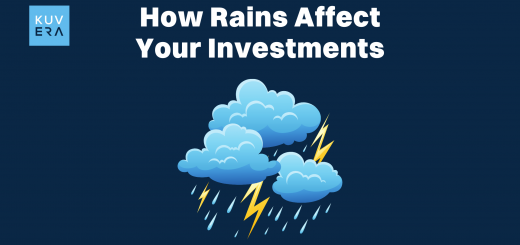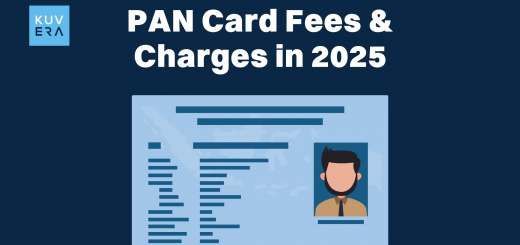Mutual funds and real estate investment trusts (REITS) are comparable financial products. Both gather funds from various investors and use those funds to purchase assets, in case of REITS these funds are invested in rent-generating commercial property. These assets are managed by REITs so that they can profit from capital growth and rental income. REITS like mutual funds are corporate entities in the form of trust.
REITS makes investments in real estate that can produce rental income, such as office buildings, warehouses, shopping centres, etc. However, office assets are the primary focus of Indian REITs. Investors might get a dividend as a regular source of income from REITs. The company’s rental income is used to pay this dividend.
Because the minimum investment is low, both small and large investors can participate in India’s real estate industry. When REITs were first introduced in India a few years ago, the required minimum investment was INR 50,000 for a 200-unit lot. However, SEBI has lowered the required minimum investment to between INR 10,000 and INR 15,000 with a one-unit lot size. This was done to stimulate more listings and boost liquidity in the REIT market.
Qualifications for REITs
REITs must comply to the following standards in accordance with SEBI guidelines and regulations:
- According to the Registration Act of 1908, the trust instrument needs to be recorded as a deed.
- The continuation of REIT activities should be the trust’s primary goal.
- Trustees, sponsors, and managers ought to be distinct legal persons.
- It should pay out interest or dividends to unitholders in the amount of 90% of the net distributable cash flow.
- Assets that generate income should receive 80% of the entire investment. Assets that are still being built can only account for 20% of the total investment.
The Benefits And Drawbacks Of Investing In REITs
Benefits:
- Diversification: REITs are ideal assets for your investment portfolio’s diversification. Without the bother of owning and operating any commercial property, they provide real estate exposure. As a result, they are an asset class that you can take into account in addition to the common asset classes of equities, debt, and gold for diversification.
- Low Investment: Investing in real estate typically involves a large financial outlay. They make a fantastic substitute for these pricey purchases. 10,000-15,000 is the minimum investment threshold in case of REITS. As a result, you can add real estate to your investing portfolio with little capital.
- Managed by Specialist: Assets owned by REITS are managed by specialists. The management of commercial real estate properties is not your concern.
- Regular Source of Income: Rent is a regular source of income for REITs. It pays interest and dividends to investors equal to 90% of the rental income. Investors can therefore count on receiving a consistent return on their investments.
- Gains: REITs are publicly traded, and their stock market performance determines their worth. Thus, a successful REIT may gain value over time, allowing investors to sell it for a profit. The investor can then take advantage of capital appreciation.
Disadvantages
- Limited options: Options are limited because REITS are relatively new to Indian markets. Only a few options are now accessible, which restricts the investor’s options.
- Limited Liquidity: Although REITs are traded on the stock market, they are not many active retail investors investing in REITS. As a result, in times of crisis, liquidating REIT units might be difficult.
- Taxation: In the hands of the investor, the interest or dividend income from REITs is fully taxable. The taxable income will include this income. Additionally, it will be taxed at the appropriate rates.
REIT Structure
Similar to mutual funds, REITs have a sponsor, a fund management company, and a trustee. With its cash, the sponsor supports the REIT’s marketing efforts, and the fund manager chooses and acquires the properties for the portfolio. The trustee makes sure that the funds are used and handled with the best interests of the investors in mind. Investors benefit from REITs because they can diversify their portfolio of investments and get consistent dividend payments.
Who Should Invest In REIT?
Real estate investment trusts (REITs) are a good way to diversify your investments and protect yourself from inflation. Therefore, those looking for alternatives to stocks and bonds may want to think about investing in real estate investment trusts.
The minimum investment is now in the range of INR 10,000 to INR 15,000 because to SEBI’s recent relaxation in investment threshold.
It provides consistent income in the form of dividends. Consequently, those searching for consistent returns may want to think about investing in real estate investment trusts. They are long-term investments, thus anyone looking to make a long-term investment may want to think about doing so.
How Are REITs Issued?
REITs are introduced through an Initial Public Offering (IPO) and a further public offering (FPOs), just like equity shares. Therefore, having a Demat Account is required. REITs trade on the stock exchange when the original offer is concluded and the allocation is complete.
The minimum investment for a REIT investment was INR 50,000 prior to July 30th, 2021. The minimum investment amount is now between INR 10,000 and INR 15,000 following SEBI’s notification on July 30th, 2021.
What to Keep in Mind When Investing in REITs
Before selecting a REIT for your portfolio, investors should take into account the following factors:
- Check the occupancy ratio, which is the proportion of rented or occupied space to the total amount of available space.
- Portfolio: Analyzing the REIT’s portfolio holdings is crucial. It’s crucial to comprehend the clientele. Spaces in REITs are occupied by businesses from many industries.
- Tenant Profile: it is crucial to also analyze the tenant profiles. The REIT may be impacted by late or erratic rent payments. The regularity of cash flows from leased or rented properties is also not currently governed by SEBI.
- Geographical Diversification: Concentrating assets in a single city might be risky. Real estate transactions are governed by state-specific laws, which differ from state to state. To safeguard the interest, the asset portfolio should be evenly distributed throughout several geographies.
- Sector diversification: According to historical trends, the IT sector has been the main user of upscale office space. It might be an over-reliance on one industry. Working from home may become the new standard, as we’ve just seen. The success of the REIT will be impacted by vacant premises or late payments. So, while selecting a REIT, make sure the asset portfolio is well-diversified across several industries, including banking, FMCG, healthcare, pharmaceuticals, etc.
- Re-lease spread and rolling renewals: The typical commitment time for leasing is five years. The number of tenants activating their renewal options at the end of the lease period is shown by the rolling renewals. Rolling renewals in a healthy number will signify consistent returns. The difference in the price per square foot (PSF) between the new and expired leases is known as the re-leasing spread. It is a percentage that represents the REIT’s capacity to carry out new leases at higher rents for the same property.
- Other Elements: The profitability of REITs can be influenced by a number of additional variables, including consistency in income (rental flow), brand name, interest rates, alterations in the economy, the sponsor’s and manager’s experience, etc.
REITs In India
As mentioned above there are not many REITS in India, we have covered the three REITs which exist in India as on 25 August, 2022.
Embassy REIT
Embassy REIT is the first listed REIT in India and the largest in Asia, sponsored by Embassy and Blackstone (by area). The business owns and runs 42.8 MSF (million square feet). Its portfolio includes a 100 MW solar power plant, six hotels (two of which are under development), and eight office parks. As of March 31, 2022, it had a completed operational area of 33.8 MSF and an occupancy rate of 87%.
- With 74% of the asset value, Bangalore is their largest market, followed by Mumbai (10%) and Pune (9%). 39% of rentals are made by the top 10 tenants. WALE (Weighted Average Lease Expiry) for the business is 7 years.
- The REIT’s sales increased by 11.4% CAGR over the previous three years, or 2962.6 Cr. EBITDA increased during the same time period by 11.2% CAGR to 2425 Cr as of FY22.
- NOI increased by 23% YoY and had 84% operating margins. 62% of the total debt held by REITs was successfully fixed at a fixed interest rate by the corporation in Q4 FY22. As a result, the average borrowing cost dropped from 6.9% to 6.5%.
- Embassy has exposure to hotels in its portfolio (4% of GAV), unlike other REITs. This segment will continue to be a burden on their operations if business travel stays low. In FY22, the corporation accepted a 14% rent increase on 7.7 msf over 89 leases. This will help the NOI rise by 10% to 15%.
Mindspace REIT
K Raheja Corp Group is the sponsor of Mindspace REIT. With a total leasable area of 31.8 msf, it has a solid portfolio of office spaces in Mumbai, Pune, Hyderabad, and Chennai.
- 36.5% of rentals come from the top 10 renters. 84.3% of the space is occupied. WALE is 6.9 years old.
- The REIT increased its sales by 6.9% CAGR over the previous four years, to 1750 Cr. FY22 saw a 53.77% increase. As of March 2022, the NAV increased from 326.1 at the time of the IPO (in July 2020) to 364.9.
- The post-tax yield offered by Mindspace is higher (90% of NDCF). With the exception of Mindspace Hyderabad (11% owned by the Government of AP), all SPVs are wholly owned by REIT.
- To 1486.4 Cr, Net Operating Income (NOI) increased by 8.2%. The current distribution yield is 5.37%. 15.7% of the value is borrowed. Net debt to NOI ratio is 2.82.
Brookfield REIT
The most recent arrival on the scene is Brookfield India REIT. It is the first commercial real estate vehicle in India that is institutionally managed, and it is sponsored by Brookfield AMC. They own commercial real estate in Kolkata, Mumbai, Gurugram, and Noida. 18.6 million square feet (SqFt) overall make up their portfolio, of which 4.7 million SqFt will be developed in the future.
- 67% of the value of the total assets come from the NCR region. The company’s occupancy rate is 83%, and its WALE is 7.3 years. The business depends largely on a select few customers. 41% of the leased area is contributed by Accenture, TCS, and Cognizant.
- To 756.8 Cr, income has decreased by 12.28%. (TTM). 33% of the value has been lent. The corporation owes 2250 Cr in total debt. In comparison to its competitors, the cost of borrowing is relatively expensive at 6.76%.
- The portfolio’s lease expiration profile is well-staggered. By FY23, this will raise the Mark to Market to 34%. As of Q2 FY22, NAV stands at 324/- per unit.
- On some properties held by Brookfield Group, the firm holds the right of first offer (ROFO). These brand-new resources could result increase to 25.3 msf, increase the total leasable space.
Conclusion
REITs provide you exposure to commercial real estate which is an extremely dependable assets, however there are certain challenges which are currently associated with REIT domain such as limited liquidity, limited options.
FAQ
-
Should young people invest in REITs?
REITs are a good option for millennials who want to get exposure to commercial real estate but are hesitant to commit a significant sum of money. These are also far more liquid than actual real estate investments, which is advantageous for millennials.
-
How is owning a physical, commercial property different from owning a REIT?
Investors can profit from real estate investment with the help of REITs without having to worry about owning or maintaining actual buildings.
-
Are REITs safe?
REITs units are listed on the stock exchange and they are subject to market risks. REITs do not guarantee any kind of returns.
Interested in how we think about the markets?
Read more: Zen And The Art Of Investing
Watch/hear on YouTube:
Start investing through a platform that brings goal planning and investing to your fingertips. Visit Kuvera.in to discover Direct Plans and Fixed Deposits and start investing today.
#MutualFundSahiHai #KuveraSabseSahiHai!











